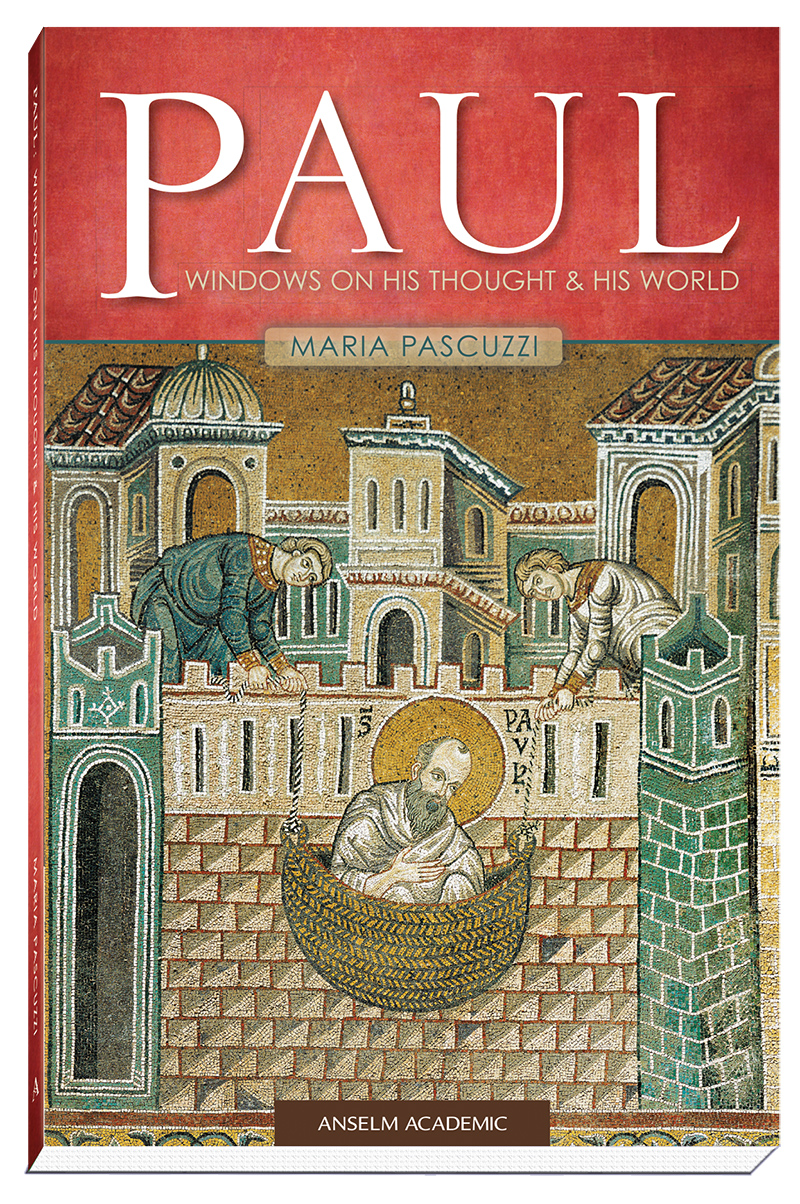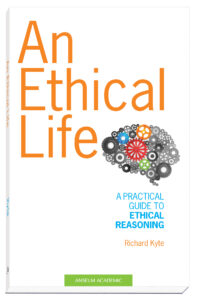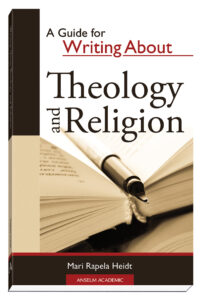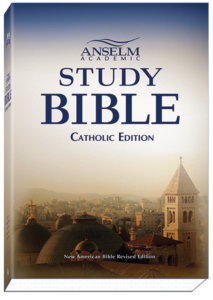Paul: Windows on His Thought and His World
About This Book
Overview
Paul: Windows on His Thought and His World examines key aspects of Paul’s thought contained in his authentic letters, and the social, ideological and historical factors that shaped it. The book considers some of the more controverted issues in Pauline studies, such as his views on the Jews and the Jewish law, sexual ethics, and women. Each topic is treated in a clear, concise, and engaging manner. Chapter overviews, photographs, maps, diagrams, sidebars, and reflection questions enhance the book, which is a solid introduction to Paul and the modern relevance of his work.
Details
| Weight | 0.7 lbs |
|---|---|
| Dimensions | 5.375 × 1.5 × 8.25 in |
| Format | Softcover |
| Print ISBN | 978-1-59982-214-3 |
| Pages | 302 |
| Item # | 7060 |
|---|
Customer Reviews
“It is a work that I would certainly consider using for undergraduates and for postgraduate foundational units. Maria Pascuzzi has written as an experienced educator with the clarity, balance, and sound scholarship I have come to expect. The layout is clear and very helpful for students and the questions that accompany each section are both focused and helpful. Maria is always well researched and her scholarship shines through without overburdening the nonspecialist. She is to be warmly congratulated on a job well done, and I hope that this volume gets the recognition it deserves.”
“In Paul: Windows on His Thought and His World, Maria Pascuzzi enables the reader to get a good glimpse of the apostle and his work. She has removed old theological controversies and modern prejudices from the windows through which we look. The windows having been cleaned, the reflections in this book mirror what contemporary scholarship is saying about Paul from a new perspective and enable us to look again at some of the issues that engage us all, like sex and the role of women in Paul’s world and ours.”
Department of Religious Studies
Brown University
“Dr. Pascuzzi succinctly presents the history of Pauline interpretation, summarizing a wide variety of opinions without being dismissive of any tradition. Well-researched but not wordy, this book explores competing views on sensitive subjects such as same-sex relationships and Paul’s attitudes toward women, in a balanced manner without promoting her personal opinion. Pascuzzi brilliantly offers a comprehensive but nuanced view of Paul’s life and thought, which leads to an appreciation of Paul as a complex person of his time.”
“A textbook that explores the person Paul and his writings in light of his historical and social contexts, Maria Pascuzzi’s Paul: Windows on His Thought and His World eschews the common format of letter-by-letter review, opting for a topical introduction that better explores reoccurring themes and synthesizes Paul’s thought. A good introduction for those beginning their Pauline studies or those ready to renew their acquaintance with the Apostle to the Gentiles.”
Catholic Theological Union
” . . . a fresh approach to the enormously challenging (and rewarding) task of studying the life and legacy of Paul. After providing a sound, nuanced picture of Paul’s historical world and his place in it, before and after his transforming encounter with the risen Jesus, Pascuzzi considers Paul’s writings in terms of key themes in his letters. These topics are studied through examining clusters of texts in a synthetic approach that recognizes the range and the depth of Paul’s thought. Focusing carefully on these major motifs in Paul’s writings, Pascuzzi guides readers in an encounter with . . . Paul’s thought. The topics are uniformly pertinent to life in the twenty-first century. This study is learned without being pedantic, clearly conceived and written, and engaging. Students and teachers alike will profit immensely from this work.”
Louisville Presbyterian Theological Seminary
“Paul: Windows on His Thought and His World provides a helpful and accessible introduction for students who want to understand the Apostle Paul—the man, his mission, and his message. Rather than attempting a comprehensive investigation into Paul’s life and ministry that would overwhelm students, Maria Pascuzzi concentrates on the most discussed and debated topics and issues in contemporary Pauline studies. She gives students easy access to Paul’s Christology, soteriology, ecclesiology, and ethics as well as a precise summary of the new perspective on Paul and Paul’s view of the Jewish law. Students will also find interesting her concise treatments of Paul’s position on homosexuality and the role of women in church and society. . . . A first-rate orientation to the field of Pauline studies that should be a required textbook in introductory courses on Paul.”
Table of Contents
Preface
- Putting Paul in His Place
- The Jesus Movement Before Paul
- Where to Find Information about Paul
- Paul’s Life before and after the Damascus Road Experience
- Perceptions of Paul
- Summary
- What Did Paul Do?
- Missionary Preacher
- Letter Writer and Pastor
- Paul’s Letters and Rhetoric
- Summary
- The World of Paul’s Ministry
- Paul’s Reality
- The Political Landscape
- The Social Landscape
- Summary
- Paul’s Good News: What God Has Done in Christ
- Paul’s Apocalyptical Worldview
- What God Has Done in Christ
- Paul’s Language to Express What God Has Done in Christ
- The Reception of the Good News: Jews, Gentiles, and Christ Crucified
- Summary
- Why and From What Did Humans Need to Be Saved?
- Saving the World from Sin
- It All Goes Back to Adam
- The Human Person in Paul’s Thought
- The Deadly Trio: Flesh, Sin, and Death
- Reoriented in Christ, The New Adam
- Saved by Faith in Christ, Not by the Law
- Summary
- What Was Wrong with the Law?
- Opposition between Faith and Law in Paul
- The Old Perspective on Paul’s View of the Law
- The New Perspective on Paul’s View of the Law
- Summary
- Called into Fellowship with Christ: The Church
- The Church: One and Holy
- Those Called: A Social Profile
- From Faith to Baptism
- The Social and Ethical Implications of Baptism
- Paul’s Key Ecclesial Images
- Summary
- Living as Members of the Saved Community
- Not Like the Gentiles: Paul on Sexual Issues
- Sex and the City: Greco-Roman Sexual Culture and the Moralists
- Hellenistic Judaism on Sex and Marriage
- Sexual Issues in Paul
- Beyond Sex: Total Body Ethics
- Summary
- Paul and Women
- It’s More Complicated than You Think
- Women and Their Roles in the Pauline Communities
- Theological Context
- Women in First-Century CE Judaism
- Greco-Roman Women
- Paul and Women: Two Difficult Texts
- Summary
- Reading Paul’s Letters in the Context of the Roman Empire
- Paul and First-Century CE Politics
- Paul and the Imperial Gospel
- Anti-Imperial Practices: Living By Gospel Values
- Romans 13:1-7: Paul the Social-Political Conformist?
- Summary
- Epilogue
- Index
Professional Reviews
Maria Pascuzzi puts Paul in his place without losing sight of his status as an apostle. For those who want an introductory textbook that might become the standard introduction to the subject, she has given a lively Paul who stands out from both his Jewish and Roman contexts. She sorts through the vast literature on the transformed rabbi, not shying away from historic and contemporary controversies, and enlightening contentious partis pris. Her trim but ample book can inform without riling Catholics, Protestants, Jews, and even secular readers.
Pascuzzi’s approach to Paul is thematic, not chronological, or epistle-by-epistle. Ten chapters are organized around the Roman and Jewish contexts, Paul’s distinctive message of “cruciform” faith, his criticism and appreciation of Judaism, the Gospel community, his attitude toward sexuality and women, and his anti-imperial challenge. She presents also the various ways that Paul has been read, throughout time, by the early church, Luther, and contemporary scholarship.
Her irenic tone does not mean that she does not take stands on Paul. In Chapter Ten, for example, which could serve as an example of her method throughout the book, she supports the view that Paul preached a dangerous, anti-Imperial message (one that the anti-Christian West might now especially heed) even though he also famously counseled obedience to the authorities in Romans 13: 1-7. Her evidence is his subversive appropriation of Imperial titles for Jesus Christ in every epistle, his rejection of the Roman patronage economic system for self-sufficient and “abasing” manual labor (2 Cor 11:7), and shared collection (Gal 2:1-10), and his counsels to avoid imperial courts (1 Cor 6:1-9), and temples (1 Cor 8:10). So why should “every person be subject to the governing authorities” (Romans 13:1)? These seven verses in Romans, according to John C. O’Neill, “have caused more unhappiness and misery in the Christian East and West than any other seven verses in the New Testament by the license they have given to tyrants, and the support for tyrants the Church has felt called on to give.”
Pascuzzi explains this “contradiction” by offering contemporary scholarly perspectives: the Anglican, N.T. Wright, argues that the passage, in fact, demotes the imperial authorities by placing them below the one true God; post-colonial theorists demonstrate that subjugation requires ambivalent and pragmatic strategies for survival. This forceful lining up of the crucial arguments is Pascuzzi’s methodology.
A second dispute that Pascuzzi negotiates is the traditional Lutheran-Catholic difference on Paul’s criticism of the “law.” She presents this as the “old” and the “new” perspective on Paul, which she attributes to Luther and summarizes neatly thus:
Paul was a Jew who tried to earn his salvation by doing the works of the law. However, he was always frustrated and discouraged because no matter how hard he tried, he could never quite do them perfectly (Rom 7: 7-25). In consequence, he was filled with anxiety, afraid he would not attain salvation. Then, one day, Paul had an encounter with the Risen Lord. As a result, Paul converted from Judaism, a legalistic religion of works-righteousness, to Christianity, which he perceived to be a superior religion of grace. (138)
She recounts an unfortunate consequence of this interpretation, one that is still frequently heard from the pulpit and in schools, which was both anti-Catholic and anti-Judaism: Roman Catholic works of mercy, devotions, and even sacraments were seen as Pharisaical attempts to buy grace. The breakthrough to a new perspective came, Pascuzzi maintains, first from a Lutheran revisionist, Krister Stendahl, who argued that Luther misread Paul as a result of his own anxiety and scrupulosity, for Paul in fact shows a “robust” conscience, one that was “as to righteousness under the law, blameless” (Philippians 3:6). Further, scholars have added a new perspective that Paul rejected the law, not because it failed to yield grace, but because it excluded Gentiles (“covenantal nomism”), but of course academic consensus on this point has not been reached. The heart of Pascuzzi’s book is thus the heart of Paul’s theology.
Two more areas of even more contemporary controversy, not only academic, occupy two more chapters: Paul’s sexual ethics, and his view of women. She negotiates these choppy waters not by offering the usual excuse that Paul was a product of benighted times, but by probing Paul’s Greek, and by comparing Hellenistic, Roman, and Jewish sources to discover an original thinker who promoted “cruciform living,” and “total body ethics,” beyond sex and gender. The linguistic evidence for Paul’s condemnation of homosexuality is there, she maintains, as well as that for women deacons, but she claims that such evidence alone cannot settle current cultural and intra-ecclesial wars. She lays the foundations, however, for using Paul today. The reader at times wishes to know Pascuzzi’s own conclusions on such questions, but she (and/or her publisher) probably decided that this textbook was not the place to do so.
Features of the trim paperback (not expensive for a undergraduate textbook) include extensive footnotes on nearly every page; excellent bibliographies, key Pauline passages, and questions for reflection for every chapter; engaging sidebars; precise chapter summaries; decent photographs; and suggested Internet links. I’d also recommend it for an adult formation group at a parish or church: it’s readable and yet scholarly, and it wouldn’t immediately start a fight. It might even help a priest stop one.
Kenneth Colston’s reviews and essays have appeared in New Oxford Review, LOGOS: A Journal of Catholic Thought and Culture, Commonweal, St. Austin’s Review, The New Criterion, and First Things
“This is an excellent introduction to Paul and his theology. Pascuzzi draws on her years of teaching Paul to fashion what would be a very serviceable text on Paul in seminary and graduate theology courses. Her approach is to place Paul in his context in both Judaism and the Greco-Roman world and then to explore key concepts of Paul’s theology that cut across his letters. Each chapter includes a set of discussion questions and a bibliography for further reading. Also included are a number of helpful maps, charts, and illustrations.”







